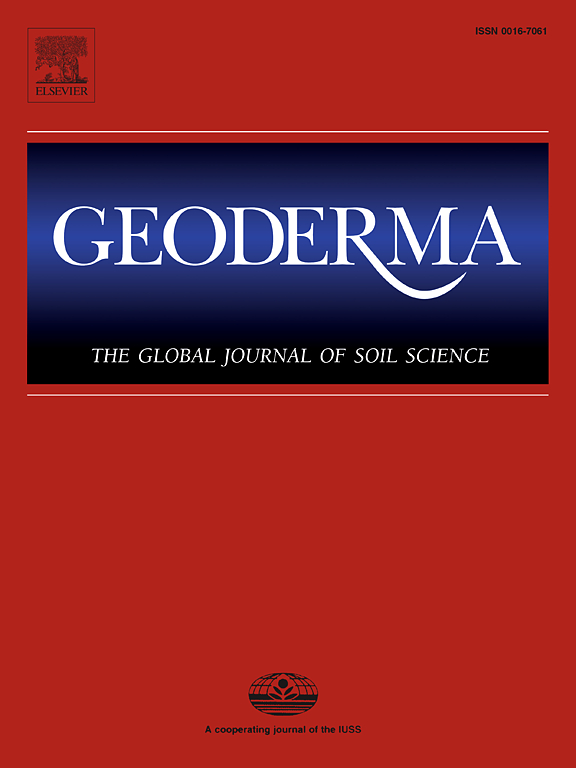Temperature sensitivity of bacterial species-level preferences of soil carbon pools
IF 5.6
1区 农林科学
Q1 SOIL SCIENCE
引用次数: 0
Abstract
Soil organic carbon (SOC) mineralization, driven by soil microbial communities, plays a crucial role in the global carbon cycle. However, the temperature sensitivity of microbial preferences for SOC substrates remains poorly understood, limiting our ability to predict SOC dynamics under climate change. Here we combined bacterial community profiling, laboratory incubations, and a pool-based carbon model to investigate the relationships between bacterial species abundances and two SOC pools with fast and slow decay rates, respectively, at different incubation temperatures. Only about half of identified bacterial species is significantly (P < 0.05) associated with the mineralization of the two pools and their temperature sensitivity (Q10). More importantly, we find that the association of the species with the two pools shifts in terms of both magnitude and direction with incubation temperature. The proportion of species associated with the Q10 of fast pool decreased, while those associated with the Q10 of slow pool increased with warming. Meanwhile, species specifically associated with the fast pool exhibit stronger temperature sensitivity compared to species specifically associated with the slow pool at lower temperatures, and vice versa at higher temperatures. These results suggest that common bacterial species associated with SOC mineralization adjust their substrate preferences in response to temperature variations, potentially impacting SOC composition and dynamics under warming.
土壤碳库细菌种类偏好的温度敏感性
土壤有机碳矿化是由土壤微生物群落驱动的,在全球碳循环中起着至关重要的作用。然而,微生物对有机碳基质的温度敏感性仍然知之甚少,这限制了我们预测气候变化下有机碳动态的能力。在这里,我们结合细菌群落分析、实验室培养和基于碳池的碳模型,研究了细菌物种丰度与两个分别具有快速和缓慢腐烂率的SOC池在不同培养温度下的关系。只有大约一半已鉴定的细菌种类具有显著(P <;0.05),与矿化程度和温度敏感性有关(Q10)。更重要的是,我们发现物种与两个池的关联随着孵育温度的变化在量级和方向上都发生了变化。随着升温,与快池Q10相关的物种比例降低,与慢池Q10相关的物种比例增加。与此同时,与快速池相关的物种在较低温度下比与慢池相关的物种表现出更强的温度敏感性,反之亦然。这些结果表明,与有机碳矿化相关的常见细菌种类会根据温度变化调整它们的底物偏好,从而可能影响变暖下有机碳的组成和动态。
本文章由计算机程序翻译,如有差异,请以英文原文为准。
求助全文
约1分钟内获得全文
求助全文
来源期刊

Geoderma
农林科学-土壤科学
CiteScore
11.80
自引率
6.60%
发文量
597
审稿时长
58 days
期刊介绍:
Geoderma - the global journal of soil science - welcomes authors, readers and soil research from all parts of the world, encourages worldwide soil studies, and embraces all aspects of soil science and its associated pedagogy. The journal particularly welcomes interdisciplinary work focusing on dynamic soil processes and functions across space and time.
 求助内容:
求助内容: 应助结果提醒方式:
应助结果提醒方式:


